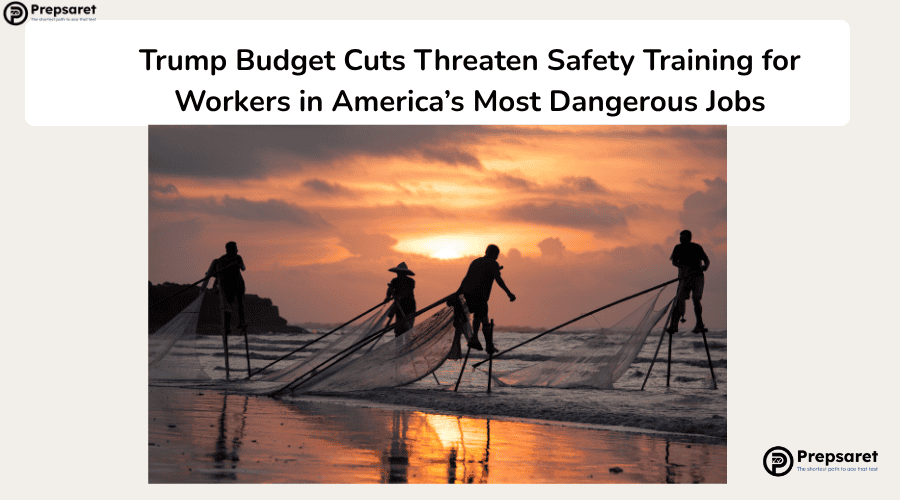Key Points:
- Federal cuts to NIOSH may force closure or reduction of safety programs for fishermen, farmers, and loggers.
- Experts warn that eliminating training will increase workplace fatalities and emergency response costs.
- The administration defends the cuts as part of a broader effort to streamline government and reduce bureaucracy.
Safety programs that train America’s most at-risk workers—fishermen, farmers, and loggers—are facing major reductions after sweeping budget cuts by the Trump administration to a key federal workplace safety agency. Experts warn the move could endanger lives and strain emergency services. Trump’s proposed budget cuts could undermine critical safety training programs for workers in some of America’s most hazardous industries, increasing the risk of injury and death on the job.
On April 1, the Trump administration terminated approximately 875 of 1,000 staff at the National Institute for Occupational Safety and Health (NIOSH), a federal agency under the Department of Health and Human Services (HHS). NIOSH has long funded training programs across the country aimed at improving safety in some of the nation’s most hazardous professions.
Although 300 employees were later reinstated, the reinstatement did not include those working in the office that manages the Centers for Agricultural Safety and Health, which support regional safety programs across the U.S.
Critical Safety Programs in Jeopardy
Nonprofits like Fishing Partnership Support Services (FPSS), which trains East Coast fishermen in emergency response techniques, say the loss of NIOSH funding could curtail their ability to continue life-saving instruction. FPSS Vice President Dan Orchard confirmed the group expects funding to lapse in September, putting future trainings at risk.
Commercial fisherman Robbie Roberge, who once used FPSS training to safely evacuate his burning vessel, emphasized the importance of such programs. “I have years of experience, but not dealing with emergencies,” he said. “I make it a point to be here.”
Leaders of other training centers, like the Southeastern Coastal Center for Agricultural Health and Safety in Florida and the Alaska Marine Safety Education Association, have already begun winding down operations in anticipation of expiring grants. “We’re shutting down direct education to the workers,” said Dr. J. Glenn Morris, director of the Florida-based center.
Government Stance and Growing Concerns
Critics argue that these cuts are not just a bureaucratic reshuffle—they’re a potential threat to worker safety. John Roberts, an FPSS trainer and former Coast Guard officer, warned that fewer trained workers could increase reliance on costly government rescues. “The return on investment is huge. This training saves lives and money,” he said.
In response, an HHS spokesperson claimed, “The work will continue. HHS supports America’s farmers, fishermen, and logging workers.” Meanwhile, Health Secretary Robert F. Kennedy, Jr. defended the cuts, saying they are part of a strategy to streamline agencies and create a more efficient Administration for a Healthy America.
While the administration frames the reduction as fiscal responsibility, safety advocates worry the cost may be counted in lives lost and injuries sustained in the nation’s most perilous occupations.
Read more: What Is the Entry Level Into Working in HR

